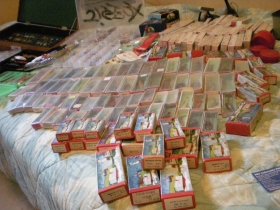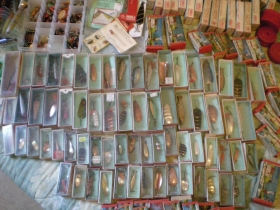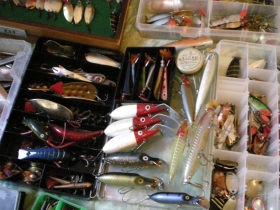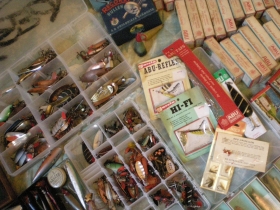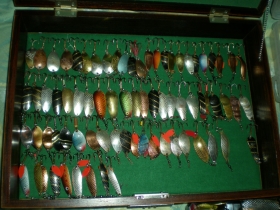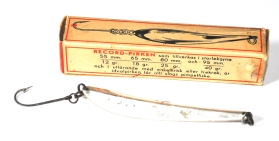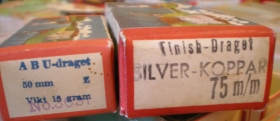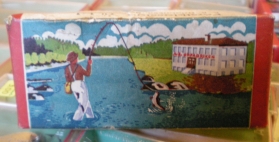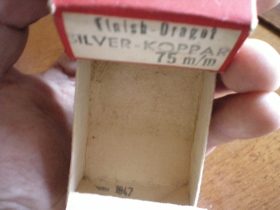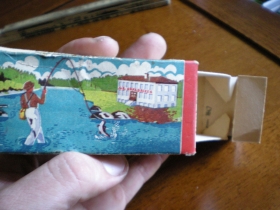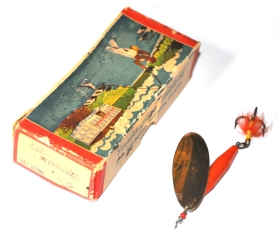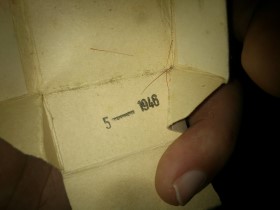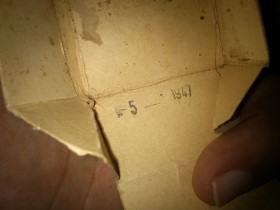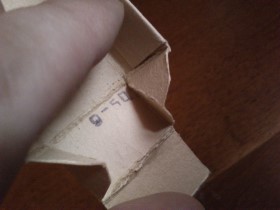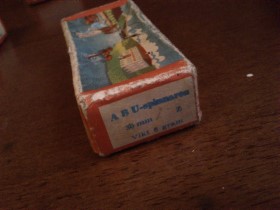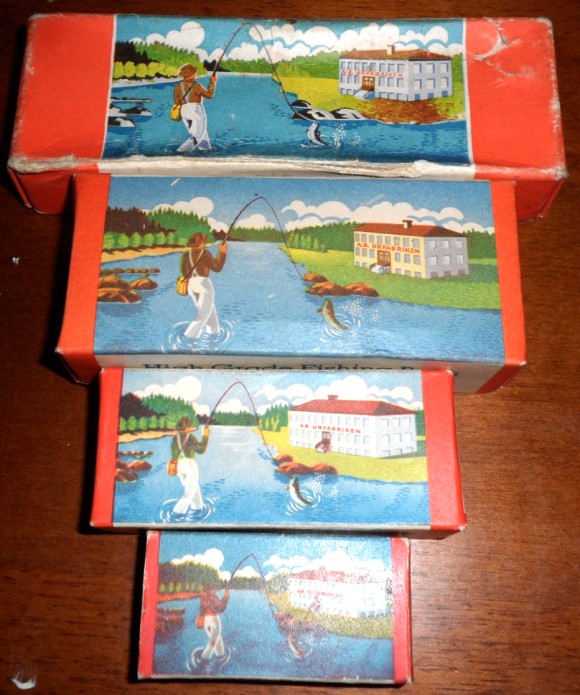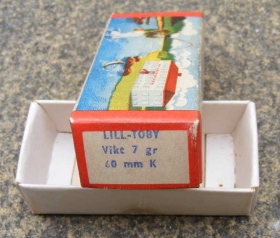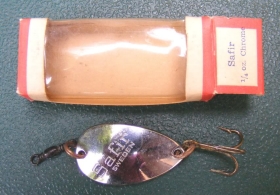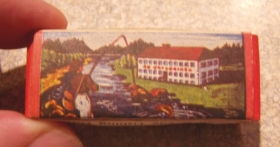Study: Record /ABU Lure Paper Boxes
This work is the on-going study of many people who have already discussed the topic, but recently primarily myself and Dr Tooma from Sweden (who tells me my site inspired him to collect and discover more in this fascinating field) , have decided to start documenting what we know. It is a work in progress and hope many people join in our quest.
Other acknowledged students of ABU have contributed ideas and images also , notably the Welsh sleuth himself Mike Elsworth.
So to start...Tooma has been collecting ABU lures and has a fine mixed collection but it is truly the boxes which contain them that have stirred his passionate interest.
The following discussion covers all paper boxes except for the one the Record perk was sold in. it was considerably different
Generally the paper boxes
Many of the paper boxes exhibit great variation, some intentional as outlined, some minor and merely resulting from differing dye lots or change in manufacturer of the box.
Despite some problems , we have all the ABU paper box models figured out. More to crop up no doubt!
Enjoy these very early Box Model Type 1 lures !
So specifically each Box type to follow
Box model 1
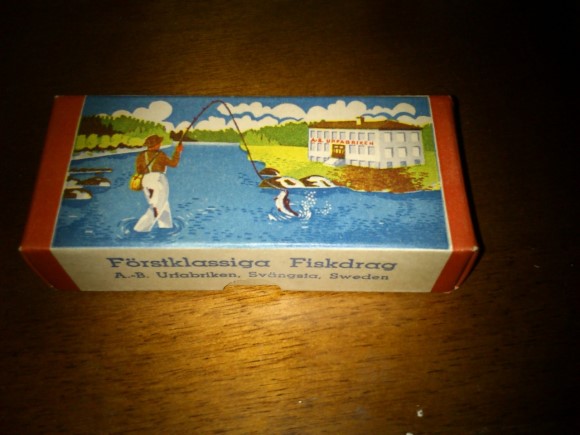
The very first boxes that i have found dated are from 1946, but the lures came
out at least a year before that. But lets start with finding out what exactly
marks a box model 1?
Well, there are in fact quite a few things that tells you that this is a
model 1 box. They were 8-windows of course, but the weight/lure/colour
information on the shortside of the box are printed often with black capitol
letters, or a type of writing that reminds of handwriting (sometimes with blue
ink). This is a good beginning.
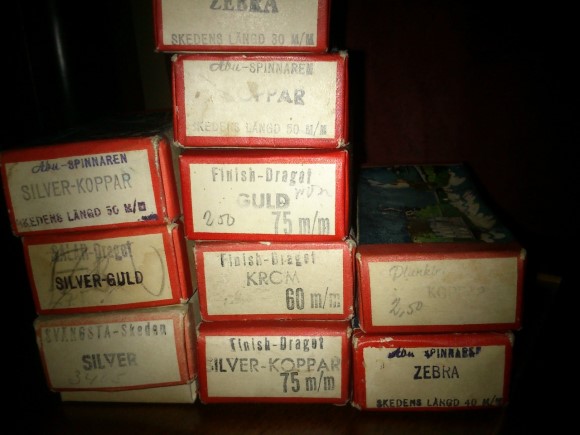
The model 1 boxes came out in one size only, and that is the
large model. (there are small, medium, large and extralarge boxes). Even the
smallest spinners (30mm) came in theese boxes.

The layout in these boxes is far different than in following types. The clouds,
the colours, the fisherman's shirt is brown, the fishing line, the fish, the
rocks and just about everything. Look closely and you will see!
The
best way is to carefully pull open the inner boxes short side, and there you
will more often than not find that the year of production is printed with black
ink..
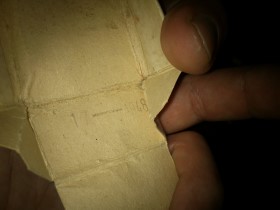
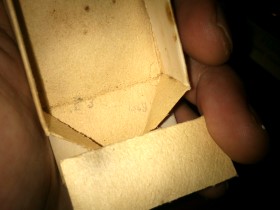
The model one came from around 1944-45 and up to 1949. Have a few boxes that
havent got the year printed on them, and theese could very well come from 1945
or so..?
The lures came wrapped in paper, and unmarked for selling prices. So very often
you find boxes with the price written on them. A clean mint box from mid
fourties is very rare in every case, and rarely seen.
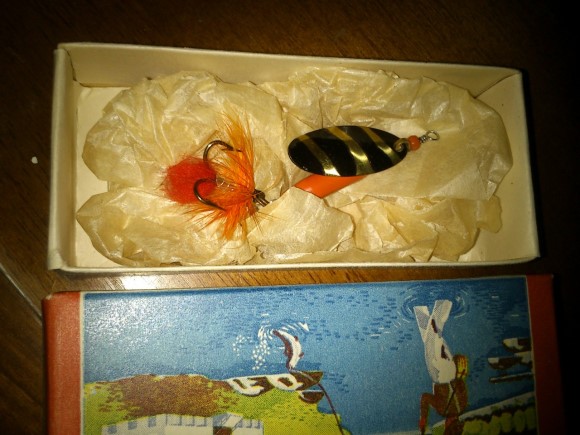
The box is made of paper, the lures of metal, so its not hard to understand that
a mint box from the fourties often is far harder to find that a mint lure.
finding both sometimes impossible.
The longside of boxes model 1 seemed to come a bit different. The writing on the
boxes is in swedish on one side (förstklassiga fiskedrag) and in english on the
other (high grade fishing baits). And for some reason did the writing seem to
come the other way around every other year. At least all boxes i have? Maybe
just a freak coincidence??
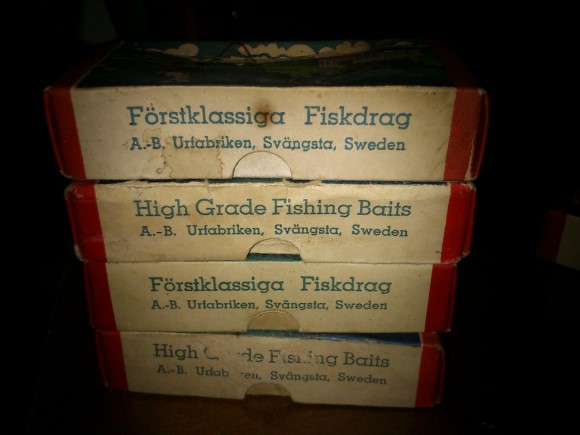
The last thing I noticed is that there are no name of the factory which printed
the boxes. Later versions are printed by Robert Skarstedts or Esselte, but the
boxes up to 1949 are all unmarked.
The very picture on the box are painted by an employee according to Lens book,
and I don't know why there are so many variations. I can´t imagine that the poor
employee did have to paint a new picture every time the layout changed, so
variations should come from the factories that made the boxes?
So this was model 1. there are more details i have not mentioned of, but the
model 1 cannot really be mixed with any other model, so no need to be too
detailed about it.. 1950 was a more exiting year for the boxes than most of us
who collects ABU perhaps know...
Model 2
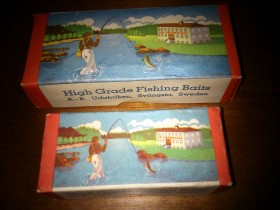
The model 2 box appeared in 1949, and now in two sizes. The regular xl box and a
medium size box for smaller lures like spinners and smaller spoons. The model 2
box did appear on the market for a couple of years only, from late 1949 to
somewhere around 1952 when the 7gr lill-lures came. The first model 2 boxes had
the black letters on the weight/lure/colour column, just as the model 1 box, and
these boxes are very rare in my opinion. The bottom box also had a light red
colour to it which disappeared on the later boxes.
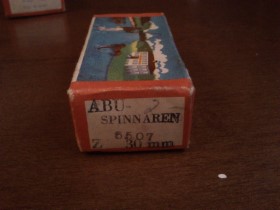
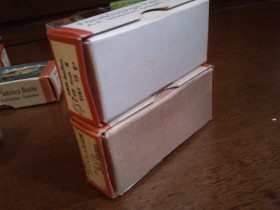
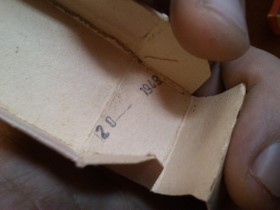
The model 2 box is like the first model an eight window box, but the artwork has
changed in a lot of ways. If you look closely you´ll find that the clouds, the
colours, the stones and just about everything is different..yet the same. A bit
more cartoonish layout i guess you could call it..
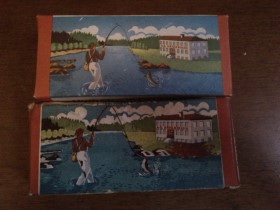
These boxes also has the name of the factory which printed the boxes. Robert
Skarstedt printed with blue in on the inside of the box. The 1950 years box and
later has a light blue ink on the weight/colour/lure column on theese ones, and
from here on to the very last paperbox it would stay blue. The year 1950 is the
last year i have found printed on the boxes. The year changes to a number from
here on, and what these numbers stands for I do not know?

My guess is that the lures were sold in such numbers by now that the medium
model box appeared. It would be a reason to save some money and space to have
smaller boxes to smaller lures. Don't know who printed the first boxes, but all
these are marked with Robert Skarstedt, so perhaps a change of manufacturer was
the reason for these changes on the layout. And soon there would be even bigger
changes. The model 2 box is very easy to spot from both earlier and later
models so i guess that by now you should be able to see one when you find one..
MODEL 3 & 4
MODEL 3
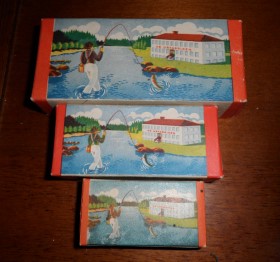
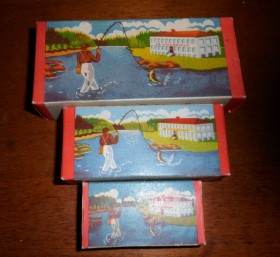
The model 3 is by far the most common box of all the paper boxes, but very often
mixed together with the model 4 which is a whole different story.
First and the most noticeable difference with the model 3 box is that there now
were 11 windows on the factory pictured on the box.
I guess that the model 3 came around 1952-53. The lill-lures had now come out on
the market and the small box were made for these small lures.
The model 3 box is printed by Robert Skarstedt and have some major differences
to the model 4 made by Esselte.
Look closely and compare the pictures above: Model 3 has a green shirted
fisherman (medium box), the fisherman's line do not touch the clouds, the colours
are a bit lighter and the factories bottom windows are white..
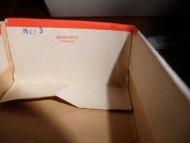
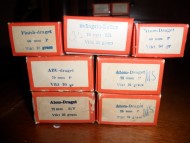
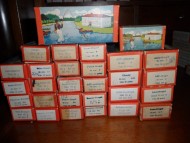
My guess is that Robert Skarstedt made all boxes up to 1957 and after that
Esselte took over (or bought Skarstedts?). Esselte is a major printing industry
in Sweden and still running.. The S/V lures and the PM coloured lures i have are
printed by Skarstedt, as well as one joker lure.. so up to 1957 that is.
The earliest Esselte made box i have is a Safir 10gr, and the last of those came
out around 1957.
Esselte boxes are all the same in layout. All have the warm brown colour on the
shirt of the fisherman and the line touches the top cloud.
All lures i have in these boxes are the later lures as Hazard, Flamingo, Toby
and Atom Vass..
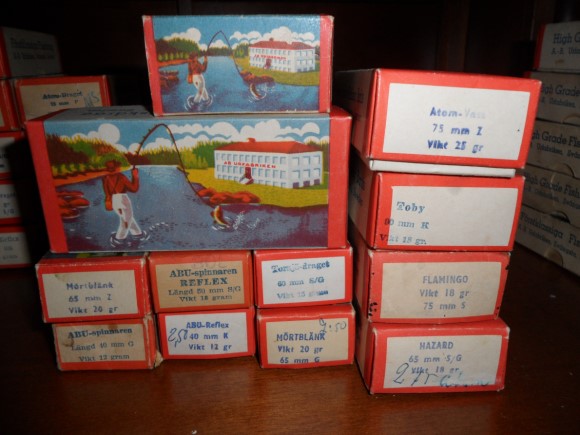
So here it is. The model 4 box came out just for a couple of years, and around
1960 the Esselte plastic lid boxes came and the paper boxes were never to be
seen again. Hope all ABU fans have enjoyed the study, and if you find any faults or want to
come with new information, please mail and tell us! pictures always welcome!
Here you have all sizes from small to XL
We lovers of all things ABU, Mike Elsworth aka
The Welsh Sleuth, has kindly shared so many great images here.
What could be one of the rarest boxes is the Lill Toby, of which the box
clearly exists but no one yet has discovered the lure to go within.
This box has not been seen anywhere but it was sourced from the USA, so it appears some early lures were marketed differently there.
And who has an opinion on this one?
Please feel your input, help , criticism is very welcome and I look forward to expanding with network of Record ABU lure collectors and appreciators.
Contact me here to assist.
